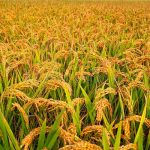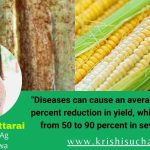Integrated fish farming

Introduction and concept
Economically, many people are being busy as bee in the field of agriculture. In this contemporary era, the scope of fish farming has increased in a skyrocketing way. Many strategies regarding agriculture have been made focusing on conserving natural resources, purposive use of available materials and recycling the wastes. For instance, INTEGRATED FISH FARMING is one of them.
Generally, integrated fish farming refers to the practice of combining fish culture with agriculture or livestock for increasing the production. As fish become major commodity of this system so, it is called as integrated fish farming. Integrated fish farming is totally based on the concept that there is no waste and such waste materials can become valuable materials for another product. In context of Nepal we can see many farmers paying attention on integrated fish farming. It provides quality protein food, recycling of farm wastes, employment generation and resources utilization. It is accepted as sustainable form of aquaculture.
Principles supporting model of sustainable food production
- Waste products coming from one subsystem serves as nutrients for second system.
- Increases diversity and yields multiple products.
- Enhances the local economy.
- In paddy cum fish farming, the herbicides and pesticides can affect fish and may lead to dealth of fish so, herbicides should be avoided as possible.
- In poultry cum fish farming, chicks should be examined time to time and diseased one should be isolated otherwise it will damage whole stock and fish.
- In duck cum fish farming, the released fingerlings should be of more than 10cm size, otherwise the ducks may feed on the fingerlings.
- It has been found that satisfactory fish production can be obtained with much lower manuring and can reduce the pollution.
TYPES OF INTEGRATED FISH FARMING
A. Agri based fish farming
Paddy cum fish culture
This is a innovative technique . In this farming, rice is transplanted in June and fingerlings of carps or tilapia are stocked into the fields about a week after the paddy transplantation or after the rice is rooted and raised there. Now rice cum fish farming has already been started in Bhaktapur, Kaski, Tanahu, Syanja,Dhanding, Gorkha and Makwanpur districts of Nepal.
Advantages
Firstly, it provides additional income and off seasonal employment to the farmers. Food that should be provided to the fish can be reduced as it can gets its nutrition from the wastage grains. It is also mentioned that due to fish cultivation, paddy production gets increased by 5 to 15%.
B. Live stock farming
I. Poultry cum fish culture
It is generally done as poultry manure is very efficient fertilizer for fish. The poultry housing should be constructed in a such away that it should partially cover the fish tank and droopings can be directly use for fish culture. This method can be so economical for poor farmers.
Advantages
No supplementary fish feed is required. It is estimated that one can harvest 600kg of prawns and an equal amount of fish along with 250 birds.
II. Duck cum fish culture
We all know that duck are commonly called as biological aerator. A duck house can be constructed in the vicinity of fish pond and after cleaning the duck shed, the waste water is allowed to enter in to the pond . OR We can also raised them in a fenced net so as to enable the fish to enter into the net while ducks cannot escape out of it. It is best method for rearing both fish and ducks.
Advantages
Ducks help to eradicate vectors of fish pathogenic organisms and water borne diseases as they feed on unwanted weeds, and harmful insects .
III. Cattle cum fish culture
Fish farming by using cattle manures has long practiced in our country. In this technique, cow sheds are constructed near to the fish farms so that all the outlet can be drained into the pond and nourish the fish.
Disadvantages of integrated fish farming
Assumption has been made that integrated fish farming with pigs and poultry may be a cause of influenza pandemic and can create new lethal strains of viruses by mutation.
Precautions of integrated fish farming
Writer: Smriti Poudel (Student, Bsc. Ag IAAS Paklihawa Campus)

 दिल्लीको होटलमा बसेर क्यानडा र अमेरिकामा मानव तस्करी
दिल्लीको होटलमा बसेर क्यानडा र अमेरिकामा मानव तस्करी  अनलाइन जुवा खेलाएर काभ्रेका अनिलले गरे दुई अर्बको कारोबार
अनलाइन जुवा खेलाएर काभ्रेका अनिलले गरे दुई अर्बको कारोबार  मुख्यमन्त्री सोडारीले विश्वासको मत लिन सुदूरपश्चिमको प्रदेश सभा बैठक आव्हान
मुख्यमन्त्री सोडारीले विश्वासको मत लिन सुदूरपश्चिमको प्रदेश सभा बैठक आव्हान  अफगानिस्तानमा बाढीबाट ३१५ भन्दा बढीको मृत्यु
अफगानिस्तानमा बाढीबाट ३१५ भन्दा बढीको मृत्यु  सुँगुरको मिर्गौला प्रत्यारोपण गरिएका रिचर्डको निधन
सुँगुरको मिर्गौला प्रत्यारोपण गरिएका रिचर्डको निधन 



निकै राम्रो लेख छ ! धन्यवाद एकीकृत माछापालन को बार जानकारीको लागि ! आर्को पटकको लेख साधारण किसान लाई सहज हुने गरि नेपाली भाषामा लेख्नुहोला है !!☺️